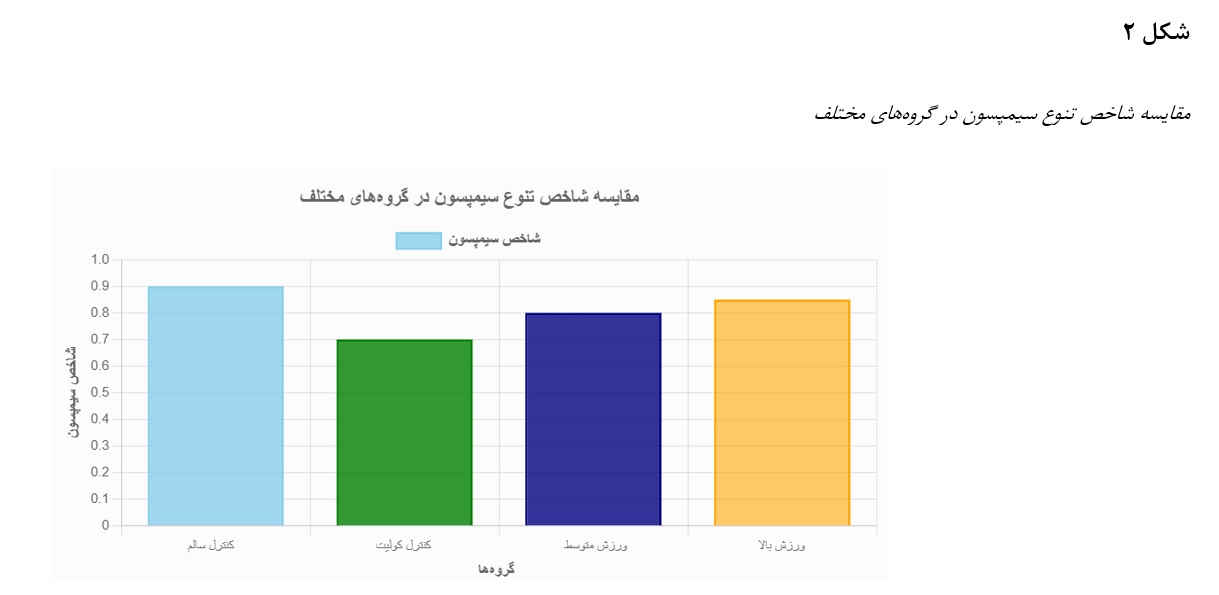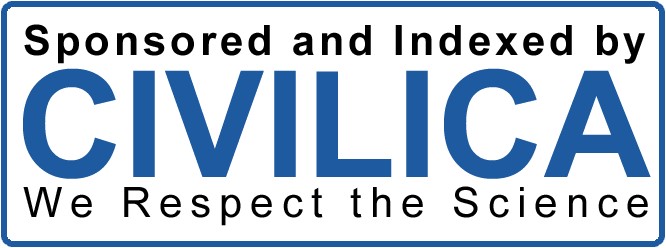The Effect of High- and Moderate-Intensity Aerobic Interventions on Gut Microbiome Diversity and Function: Investigation of Changes in Lactobacillus, Bifidobacterium, and Escherichia coli in Aged Mice
Keywords:
Gut microbiome, aerobic exercise, colitis, aging, Probiotic bacteriaAbstract
This study aimed to examine the effects of high-intensity (85–100% VO₂max) and moderate-intensity (70–75% VO₂max) aerobic training on microbial diversity (Shannon and Simpson indices) and populations of Lactobacillus, Bifidobacterium, and E. coli in aged mice with dextran sulfate sodium (DSS)-induced colitis. In this experimental, randomized controlled design, 32 male Wistar mice (18 months old) were divided into four groups (healthy control, colitis control, high-intensity exercise, and moderate-intensity exercise). Colitis was induced using DSS (2–3%) for 7 days. Aerobic training was performed for 8 weeks (five sessions per week) on a treadmill. Microbial diversity was evaluated using 16S rRNA sequencing, quantitative polymerase chain reaction (qPCR), and selective culture for Lactobacillus, Bifidobacterium, and E. coli. Data were analyzed using two-way ANOVA and independent t-tests (p ≤ .05). Colitis led to a reduction in Shannon (2.5 ± 0.3) and Simpson (0.7 ± 0.1) indices, a decrease in Lactobacillus and Bifidobacterium, and an increase in E. coli (p < .001). Both high- and moderate-intensity aerobic exercise improved microbial diversity (Shannon: 3.2 ± 0.2 and 3.0 ± 0.2, respectively), increased Lactobacillus and Bifidobacterium, and reduced E. coli (p < .001). High-intensity exercise demonstrated stronger effects (p = .04 for Lactobacillus). Aerobic training, particularly at high intensity, enhances gut microbiome diversity and bacterial balance in aged mice and may serve as a non-pharmacological strategy for managing intestinal inflammation.
References
Allen, J. M., Mailing, L. J., Niemiro, G. M., Moore, R., Cook, M. D., White, B. A., Holscher, H. D., & Woods, J. A. (2018). Exercise alters gut microbiota composition and function in lean and obese humans. Medicine & Science in Sports & Exercise, 50(4), 747-757. https://doi.org/10.1249/MSS.0000000000001495
Aya, V., Jimenez, P., Muñoz, E., & Ramírez, J. D. (2023). Effects of exercise and physical activity on gut microbiota composition and function in older adults: A systematic review. BMC Geriatrics, 23(1), 364. https://doi.org/10.1186/s12877-023-04056-4
Bolte, L. A., Vila, A. V., Imhann, F., Collij, V., Gacesa, R., Peters, V., & Weersma, R. K. (2021). Long-term dietary patterns are associated with pro-inflammatory and anti-inflammatory features of the gut microbiome. Gut, 70(7), 1287-1298. https://doi.org/10.1136/gutjnl-2020-322670
Clauss, M., Gérard, P., Mosca, A., & Leclerc, M. (2021). Interplay between exercise and gut microbiome in the context of human health and performance. Frontiers in Nutrition, 8, 637010. https://doi.org/10.3389/fnut.2021.637010
Conley, M. N., Wong, C. P., Duyck, K. M., Hord, N., Ho, E., & Sharpton, T. J. (2016). Aging and serum MCP-1 are associated with gut microbiome composition in a murine model. PeerJ, 4, e1854. https://doi.org/10.7717/peerj.1854
De Vos, W. M., Tilg, H., Van Hul, M., & Cani, P. D. (2022). Gut microbiome and health: Mechanistic insights. Gut, 71(5), 1020-1032. https://doi.org/10.1136/gutjnl-2021-326789
Hoshino, D., Y., Y., Y., K., H., H., & A., B. (2015). High-intensity interval training increases intrinsic rates of mitochondrial fatty acid oxidation in rat red and white skeletal muscle. Appl Physiol Nutr Metab, 38(3), 326-333. https://doi.org/10.1139/apnm-2012-0257
Høydal, M. A., Wisløff, U., Kemi, O. J., & Ellingsen, O. (2007). Running speed and maximal oxygen uptake in rats and mice: practical implications for exercise training. European journal of cardiovascular prevention and rehabilitation, 14(6), 753-760. https://doi.org/10.1097/HJR.0b013e3281eacef1
Huynh, U., & Zastrow, M. L. (2023). Metallobiology of Lactobacillaceae in the gut microbiome. Journal of Inorganic Biochemistry, 238, 112023. https://doi.org/10.1016/j.jinorgbio.2022.112023
Ramos, C., Gibson, G. R., Walton, G. E., Magistro, D., Kinnear, W., & Hunter, K. (2022). Systematic review of the effects of exercise and physical activity on the gut microbiome of older adults. Nutrients, 14(3), 674. https://doi.org/10.3390/nu14030674
Shanahan, F., Ghosh, T. S., & O’Toole, P. W. (2021). The healthy microbiome-what is the definition of a healthy gut microbiome? Gastroenterology, 160(2), 483-494. https://doi.org/10.1053/j.gastro.2020.09.057
Varghese, S., Rao, S., Khattak, A., Zamir, F., & Chaari, A. (2024). Physical exercise and the gut microbiome: A bidirectional relationship influencing health and performance. Nutrients, 16(21), 3663. https://doi.org/10.3390/nu16213663
Vijay, A., & Valdes, A. M. (2022). Role of the gut microbiome in chronic diseases: A narrative review. European Journal of Clinical Nutrition, 76, 489-501. https://doi.org/10.1038/s41430-021-00991-6
Yazdan Nasab, A., Mirzaei, R., & Dehghani, S. (2023). A Review of the Impact of Exercise on the Gut Microbiota of Elderly Individuals. Journal of Sports Science and Health, 8(2), 70-83.
Zhong, F., Wen, X., Yang, M., Lai, H. Y., Momma, H., Cheng, L., & Huang, C. (2021). Effect of an 8-week exercise training on gut microbiota in physically inactive older women. International Journal of Sports Medicine, 42(07), 610-623. https://doi.org/10.1055/a-1308-3323

Downloads
Published
Submitted
Revised
Accepted
Issue
Section
License
Copyright (c) 2025 آرزو کلانتری (نویسنده); سعید کشاورز; الله یار عرب مومنی, لیلا صرامی (نویسنده)

This work is licensed under a Creative Commons Attribution-NonCommercial 4.0 International License.









